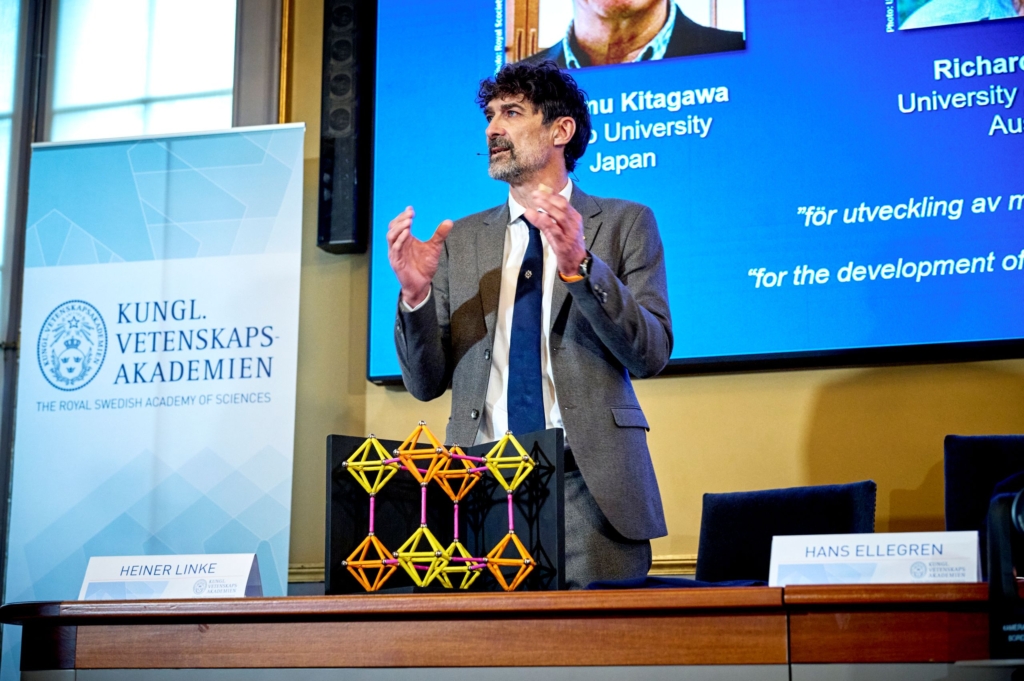The 2025 Chemistry Nobel is awarded to Susumu Kitagawa, Richard Robson, and Omar Yaghi for designing metal–organic frameworks, tiny porous structures that could help fight climate change and water scarcity.
Susumu Kitagawa, Richard Robson, and Omar Yaghi have won the 2025 Nobel Prize in Chemistry for creating metal–organic frameworks (MOFs), molecular ”buildings” with tiny cavities capable of capturing gases, storing toxic substances, and even harvesting water from desert air.
The trio will share the 11 million Swedish kronor prize.
The breakthrough began in 1989 when Richard Robson combined copper ions with a four-armed molecule to form a spacious crystal. Susumu Kitagawa and Omar Yaghi solidified this building method. Later, Kitagawa showed that gases could flow in and out of these structures, while Omar Yaghi created a stable MOF which could be modified to exhibit desirable properties.
Heiner Linke, chair of the Nobel Committee for Chemistry and professor at Lund University, explains:
– For the first time in the history of chemistry, we can predictively design three-dimensional materials.
– What the laureates managed to do was design material from just metal ions and small organic molecules, where they can predict exactly what they will get, and most importantly, build in chemical functions and physical properties to target specific applications.
The frameworks’ microscopic cavities allow gases and liquids to flow through, enabling applications such as capturing carbon dioxide from exhaust, filtering pollutants like PFAS from wastewater, and breaking down leftover pharmaceuticals.
– One exciting application is separating one gas from another, says Linke, for instance, you can make materials that specifically capture carbon dioxide, something now being tested on an industrial scale.
Although research began in the 1990s, Nobel recognition often takes years.
– To award a Nobel Prize, we need to make sure that the impact is really there. It typically becomes apparent over time how important something is, and even longer until it becomes clear if the applications are real.
He describes the work as both conceptual and practical:
– It changes how chemistry is done, but it also opens enormous possibilities for sustainable technologies. This is a breakthrough in how chemistry is used to design materials
When asked if he has any advice for young scientists, Linke shares guidance from Omar Yaghi:
– Follow your own interests rather than the path everyone else is taking. That’s how true discoveries happen.









